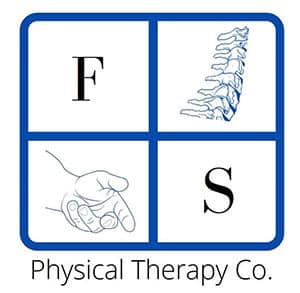Back pain is one of the most common complaints people experience, affecting millions of individuals worldwide. Whether it’s a dull ache that lingers after a long day or a sharp discomfort that limits movement, back pain can disrupt daily life, making even simple activities feel like a challenge. But here’s the good news—you don’t have to accept back pain as your new normal.
What Causes Back Pain?
Back pain can develop for a variety of reasons, and pinpointing the cause is the first step toward finding relief. Here are some of the most common culprits:
- Poor Posture – Slouching at your desk or looking down at your phone for hours can lead to imbalances that strain your spine.
- Muscle Weakness – A weak core or underactive muscles in the back can make it harder for your body to support itself properly.
- Injury or Trauma – A sudden movement, fall, or accident can lead to strains, sprains, or even more serious damage.
- Repetitive Movements – Repeating the same motions over time—whether at work, during exercise, or in daily activities—can put excess strain on the spine.
- Sedentary Lifestyle – Sitting for long periods, especially with poor posture, can increase stiffness and discomfort in the back.
The key takeaway? Back pain isn’t always about one specific injury. It’s often the result of cumulative stress on the body, making it essential to address not just the symptoms, but the root cause.
How Back Pain Affects Your Daily Life
Back pain doesn’t just impact your spine—it affects everything.
From waking up in the morning with stiffness to struggling to get through a full workday without discomfort, back pain can limit mobility, reduce energy levels, and even interfere with sleep. Over time, this can lead to frustration, reduced productivity, and a decreased quality of life. Simple movements like bending down to tie your shoes, carrying groceries, or even getting comfortable on the couch can become exhausting battles.
Worse yet, chronic back pain can take a toll on mental health, leading to stress, anxiety, and even depression. That’s why addressing it now—rather than waiting for it to worsen—is so important.
Breaking the Cycle: How to Overcome Back Pain
The good news? You don’t have to live with back pain forever. With the right approach, relief is within reach. Here are some proven ways to break free from the cycle of discomfort and get back to doing what you love.
1. Strengthen Your Core and Back Muscles
Your spine needs support, and that support comes from your core muscles. A strong core helps distribute weight evenly and reduces pressure on the lower back. Incorporating exercises like planks, bridges, and bird dogs into your routine can significantly improve spinal stability and decrease back pain over time.
2. Improve Your Posture
Slouching may feel comfortable in the moment, but over time, it can wreak havoc on your back. Proper posture keeps the spine aligned and reduces unnecessary strain. If you spend long hours sitting, make sure to:
- Keep both feet flat on the floor.
- Sit back in your chair with support on your lower back.
- Adjust your screen to eye level to avoid leaning forward.
A small change in posture can make a massive difference in preventing and managing back pain.
3. Stay Active and Avoid Prolonged Sitting
One of the biggest mistakes people make when experiencing back pain is avoiding movement. While rest is essential for healing, too much sitting or inactivity can lead to stiffness and increased discomfort.
- Take frequent breaks to stretch and walk around.
- Incorporate gentle movements, such as walking or yoga, to keep the spine mobile.
- Avoid staying in one position for too long—motion is key!
4. Stretch and Release Tension
Tight muscles can pull on the spine and contribute to discomfort. Stretching regularly can help relieve tension and improve flexibility. Try these simple stretches:
- Child’s Pose – A gentle stretch for the lower back and hips.
- Cat-Cow Stretch – Helps with spinal mobility and reduces stiffness.
- Hamstring Stretch – Eases tension in the lower back caused by tight hamstrings.
By incorporating stretching into your daily routine, you can reduce stiffness and promote better movement patterns.
5. Seek Professional Help Before It Gets Worse
If back pain has been lingering for weeks or months, it’s time to take action. While self-care techniques can help, there’s no substitute for expert guidance. A physical therapist can assess your movement, pinpoint the underlying causes of your back pain, and provide a customized treatment plan to help you recover faster and prevent future issues.
Common Myths About Back Pain
There’s a lot of misinformation out there about back pain, and believing these myths can delay recovery. Let’s set the record straight:
Myth: Rest is the best way to heal back pain.
Fact: While rest is important in the short term, prolonged inactivity can actually make back pain worse. Movement is crucial for recovery.
Myth: Surgery is the only option for severe back pain.
Fact: Surgery is rarely the first solution. Many people find lasting relief through non-invasive treatments like physical therapy.
Myth: If you have back pain, you should avoid exercise altogether.
Fact: The right exercises, when done correctly, can strengthen your back and reduce discomfort.
Take the First Step: Free Discovery Visit This Month
If back pain has been holding you back from enjoying life to the fullest, now is the time to take action. This month, we’re offering a FREE Discovery Visit to help you understand what’s causing your back pain and what can be done to fix it—without relying on pills, injections, or surgery.
During your free visit, you’ll get:
- A one-on-one consultation with a back pain specialist
- A clear understanding of what’s contributing to your discomfort
- Personalized recommendations on how to start feeling better right away
Don’t let back pain dictate your life. Take advantage of this opportunity to move, feel, and live better.
Spots are limited—schedule your Free Discovery Visit today!
Conclusion
At Fray & Stafford Physical Therapy, we’ve successfully treated countless individuals suffering from back pain and sciatica.
Back pain can be managed, whether you’re experiencing mild discomfort or severe pain, early intervention is key to achieving long-term relief.
If back pain or sciatica is affecting your daily life, don’t wait to seek treatment. Contact Fray & Stafford Physical Therapy today to schedule a free consultation with our expert physical therapists.
Our personalized treatment plans can help you move freely and live pain-free. Call us now at 321-567-3081 or book your free visit online!
Want more free advice?
Lower Back Pain Titusville, Florida – Fray & Stafford Physical Therapy Co.


